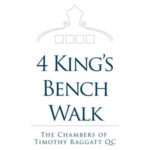Wills & Trusts Law Reports | Winter 2020 #181This was a second appeal against the decision of HHJ Pelling to overturn the trial judge’s order declaring inter alia that A was a 50% beneficial owner of A and R’s former home (the property) under a common intention constructive trust.
The trial judge had found that A’s father had bought the property in 1998 with the intention that it should be A and R’s family home. In 2008, A’s father had transferred the property to R for nil consideration. The trial judge had found that A’s father intended A to have a beneficial interest in it and had originally planned to transfer it into A a...
Simon Pedley and Sue Brookes explore the impact of being a cohabitant when one party to a cohabiting relationship dies, and the differences that exist where the parties are not married or in a civil partnership ‘One of the factors the court is under a duty to take into account in exercising its discretion is …
Continue reading "Cohabitants: Be prepared"
This post is only available to members.
Rosie Schumm and Dickon Ceadel provide a summary of the potential options for the reform of the law relating to cohabitants ‘Private members‘ bills, designed to establish a framework of rights for cohabitants on separation and/or death, have been introduced in both the House of Commons and the House of Lords.‘ Cohabiting-couple families continue to …
Continue reading "Cohabitants: Ripe for reform?"
This post is only available to members.
Chris Bryden and Jyoti Wood analyse the Privy Council decision in Marr v Collie and the significance of a commercial aspect to a personal relationship ‘The Privy Council has made it abundantly clear that it is intention, not presumption, that matters.’ In Marr v Collie [2017] the Privy Council was concerned with an appeal in …
Continue reading "Cohabitants: Seeking clarity"
This post is only available to members.
Mark Pawlowski summarises how a non-owning cohabitant can obtain capital provision under the Children Act 1989 ‘The practical effect of a settlement/transfer order made under Sch 1 is that, during the period of the children’s education, the house is held on trust for the non-owning party to the exclusion of the other party for the …
Continue reading "Cohabitants: Home truths"
This post is only available to members.
Nicola Meldrum provides guidance on the drafting of cohabitation agreements and the enforceability of such agreements ‘It would be wise to take expert advice from a tax specialist, private client practitioner and a property specialist to ensure that the agreement sufficiently incorporates these areas where necessary.’Although marriages remain the most common type of family unit …
Continue reading "Cohabitants: Best-laid plans"
This post is only available to members.
Graeme Fraser and Stephen Morrall consider the treatment of joint investments in properties and businesses by a cohabiting couple ‘The courts treat properties used as family homes and investment properties differently and are much more inclined to find a common interest constructive trust in relation to a family home.’ The volatile stock market, high property …
Continue reading "Cohabitants: An unequal partnership?"
This post is only available to members.
Deborah Jeff considers potential changes to the law relating to cohabitants and provides a timely reminder of the limited remedies currently available ‘The Cohabitation Rights Bill aims to provide basic protection for cohabitants, whether same-sex or opposite-sex, which is similar to, but not as generous or extensive as, the rights available to married couples.’ Figures …
Continue reading "Cohabitants: A new age?"
This post is only available to members.
Wills & Trusts Law Reports | January/February 2016 #15688 Leyland Road, London (property) was purchased by the parties in January 1996 for approximately £135,000 using approximately £25,000 from their savings for the deposit and taking out a joint repayment mortgage for the balance with HSBC. It was registered in their names as joint tenants. Both contributed to the cost of installing double glazing, resurfacing the driveway and landscaping the garden. The appellant, who had acquired other buy-to-let properties in his sole name, told the respondent in early 2005 that he wanted to remortgage the property because of debt problems. The property...
Rachel Willmott considers the remedies available to cohabitants as to the transfer of a tenancy and the consequences of provision for liberty to apply ‘It would have been better if, had the judge felt that justice required a fuller exploration of the possibilities of alternative accommodation (which he evidently did), he had simply adjourned the …
Continue reading "Cohabitants: Uncertain outcomes"
This post is only available to members.








